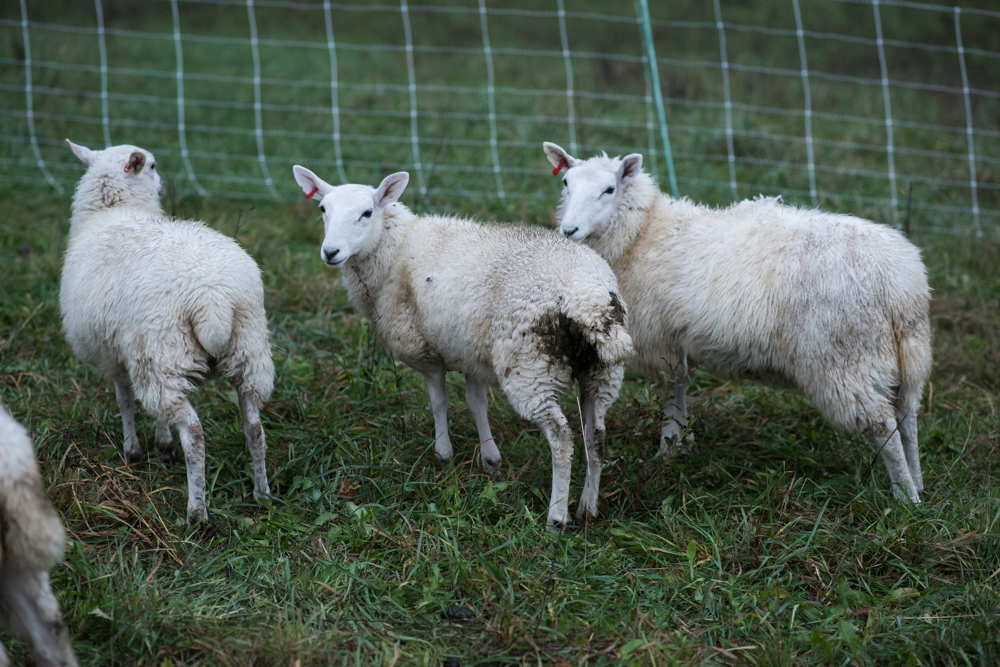When I moved the group of 20 lambs back to the farm to finishing weaning them, I put them into the big hard-fenced field (Bill’s Winter Fortress). This was partly a matter of convenience, as I had my hands full with the big group on Holt Road, and partly because it was nice to have the lambs at hand for herding training with Cass and Chloe. The downside of this convenience is that I’d had the dorset group and then the rams grazing in the Fortress shortly before, and I was concerned about transmission of intestinal parasites. Haemonchus contortus, the most common sheep parasite hereabouts, sheds eggs in the poop of its host; the eggs hatch and develop into infective larvae in about 3 weeks, and the larvae can be viable for up to 3 weeks without finding a new host. So the best way to control H. contortus parasitism in your flock is to make sure that at least 6 weeks elapse between repeated grazings. I knew I was violating this rule, but I rationalized (always rationalizing…) that the Fortress was big and I’d only been running a few sheep in there, so perhaps the likely parasite eggs weren’t densely enough distributed for the lambs to encounter them.
Reality is hard on wishful thinking.

I noticed this morning that two of the 20 lambs had egregiously poopy butts, a typical symptom of an infection with H. contortus. I’m not sure what to conclude from the fact that 18 of the lambs seem unaffected — not sure if the parasites haven’t reached sufficient numbers in the other lambs to cause visible symptoms, whether the other lambs didn’t get infected (either by luck or by dint of inherent resistance), or if the other lambs are infected but are able to keep the parasite numbers low enough to avoid symptoms (a characteristic called resilience).
In that perfect world that I was longing for yesterday, I would carefully collect fecal samples from all 20 lambs (keeping track of each sample, of course), and have them tested for the presence of parasite eggs. (In a really perfect world, I would have a little laboratory in my office to do the test myself.) With information about the level of infection in each lamb, I could draw conclusions about who was resistant, who was resilient despite being infected, and who was at the mercy of the worms. These data would help me make breeding decisions, since I want to be selecting for sheep that are naturally resistant or resilient to infection by intestinal parasites. In the real world, I will treat the whole group with an antihelmintic drug that will (hopefully) kills the worms, but also obliterate the selection criteria. I will make note of the lambs showing obvious symptoms of parasitism, and if they are consistently the ones with poopy butts, they will probably earn themselves a trip to freezer camp.